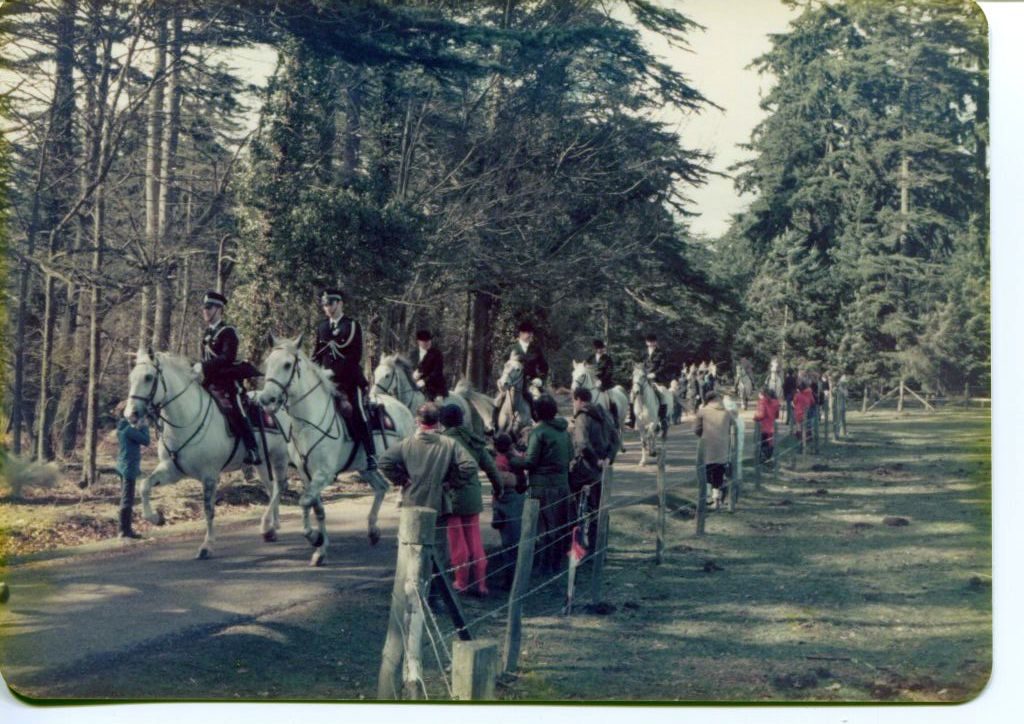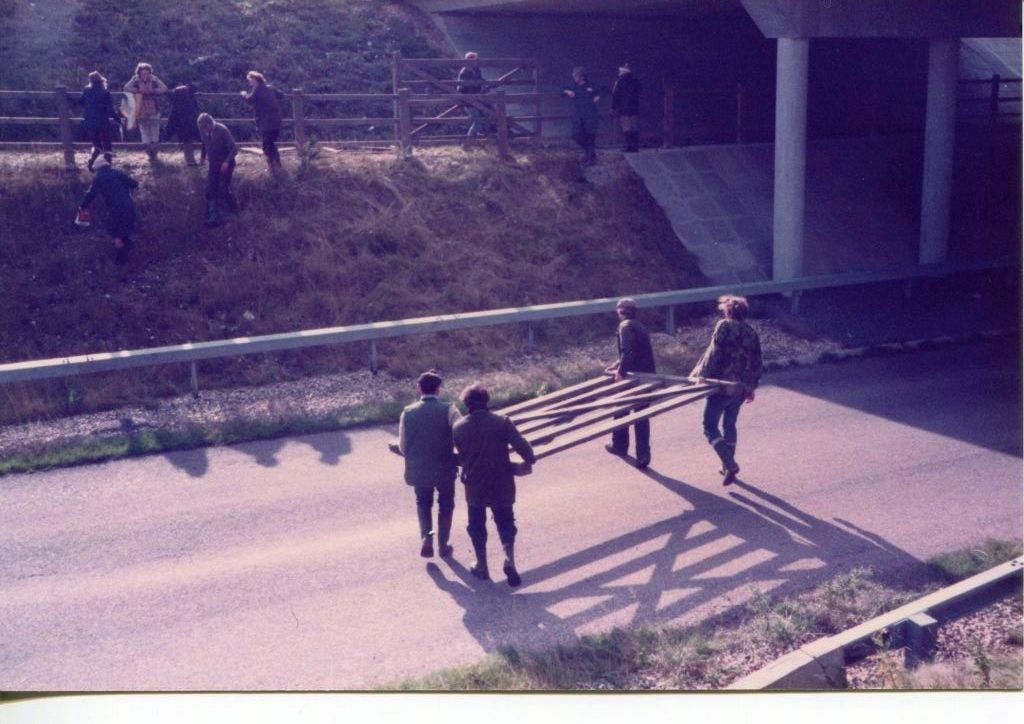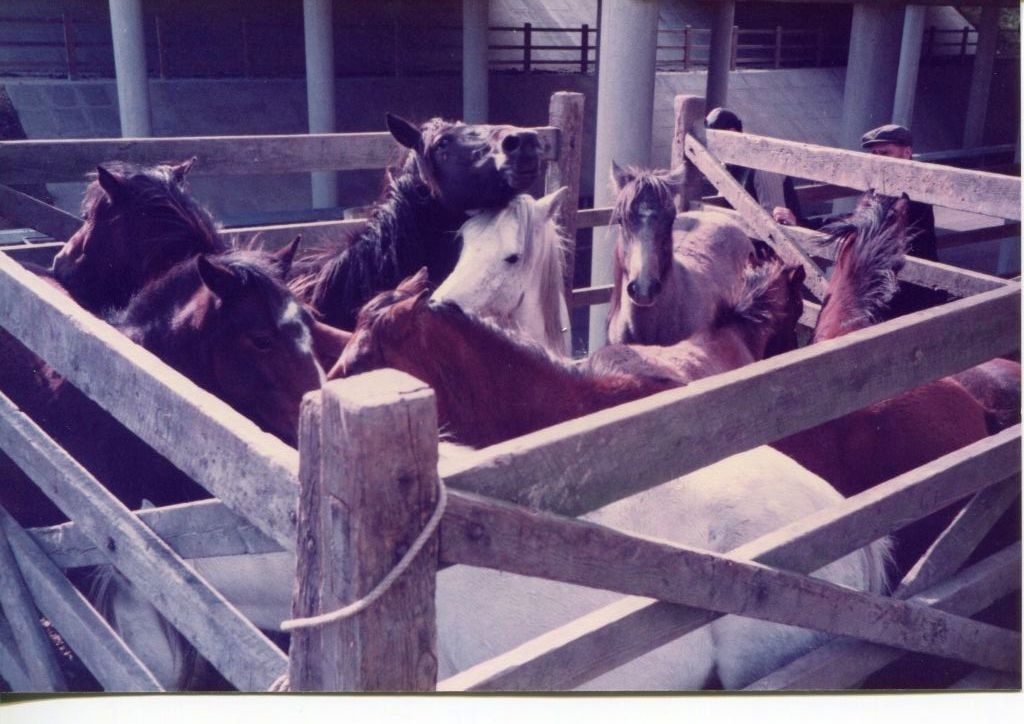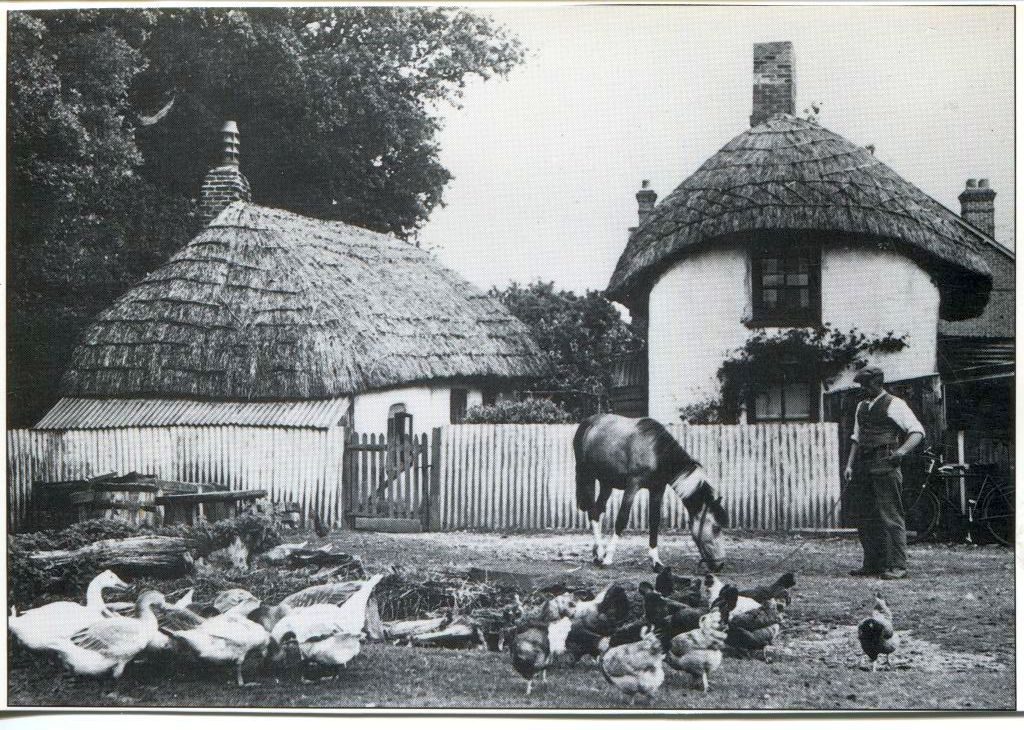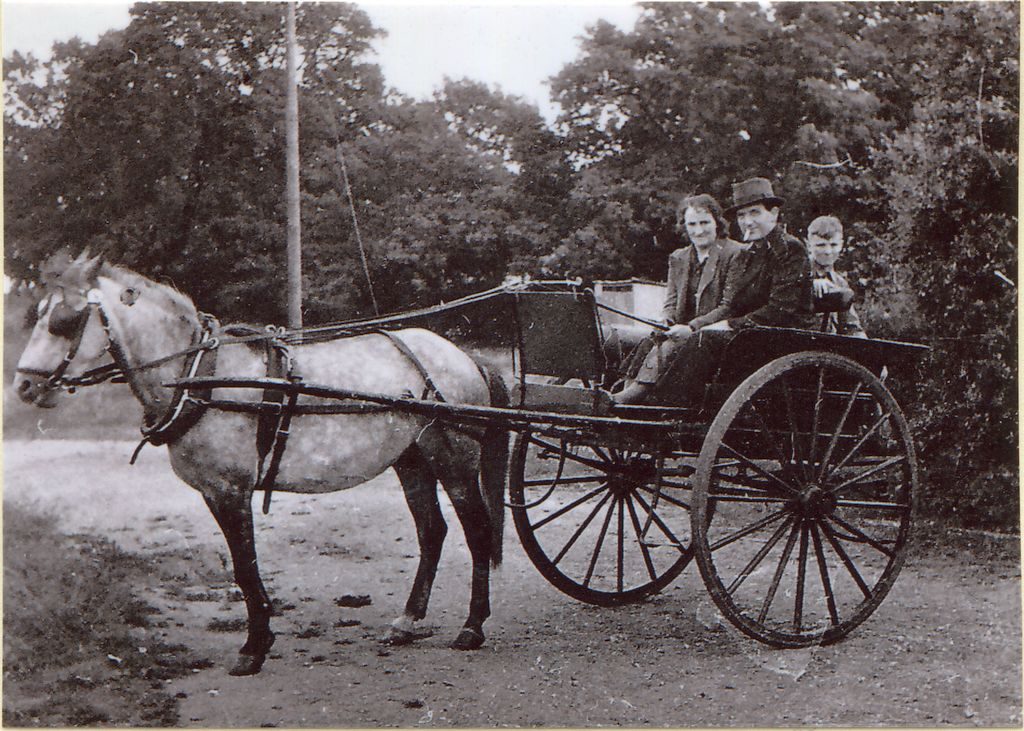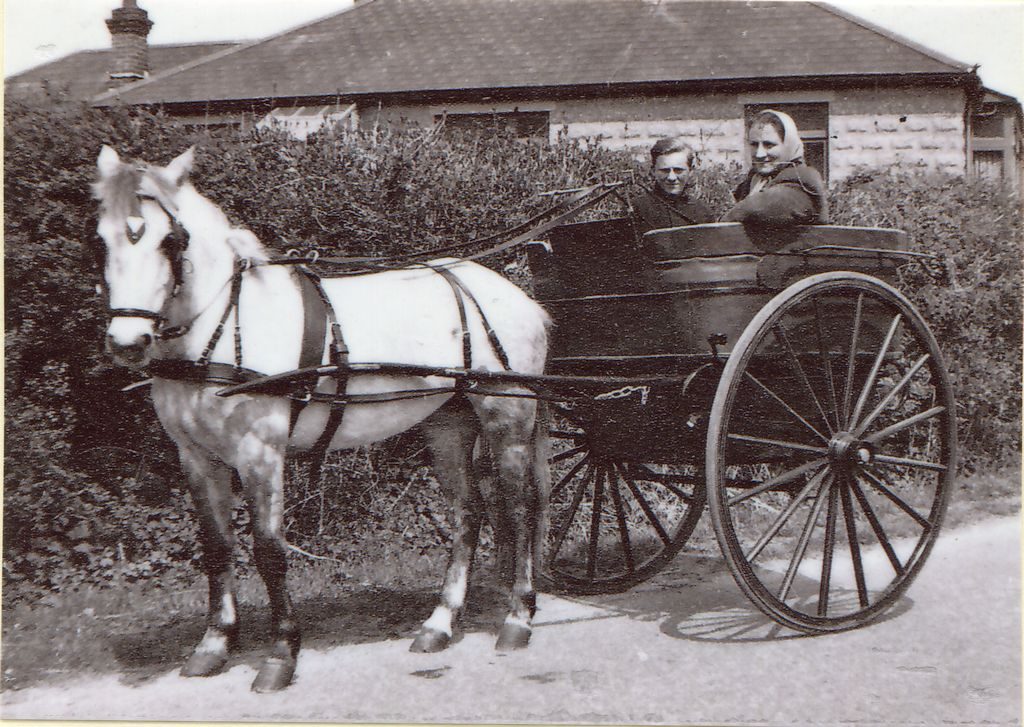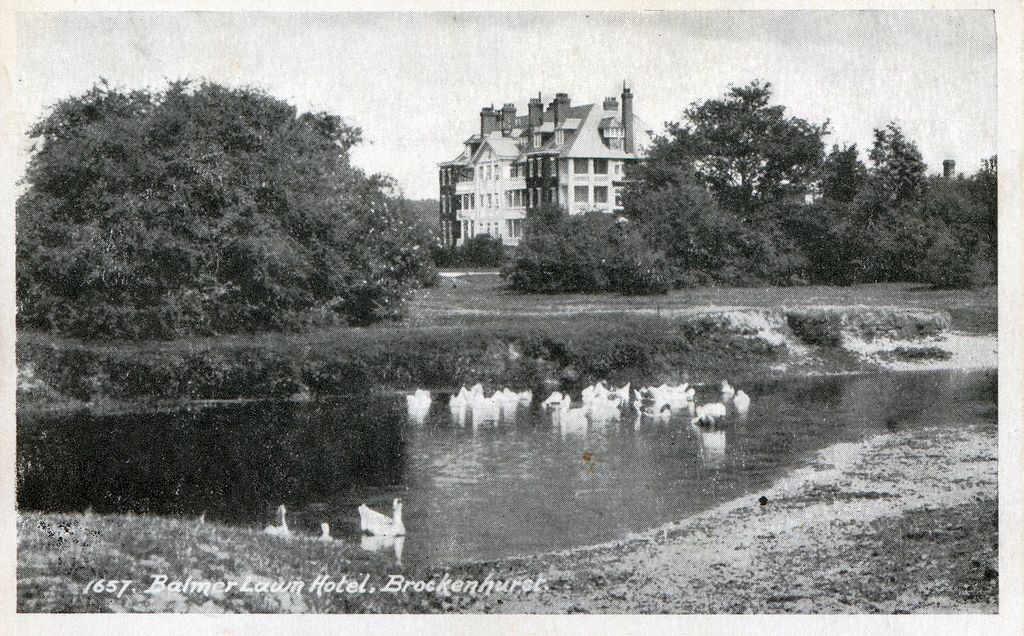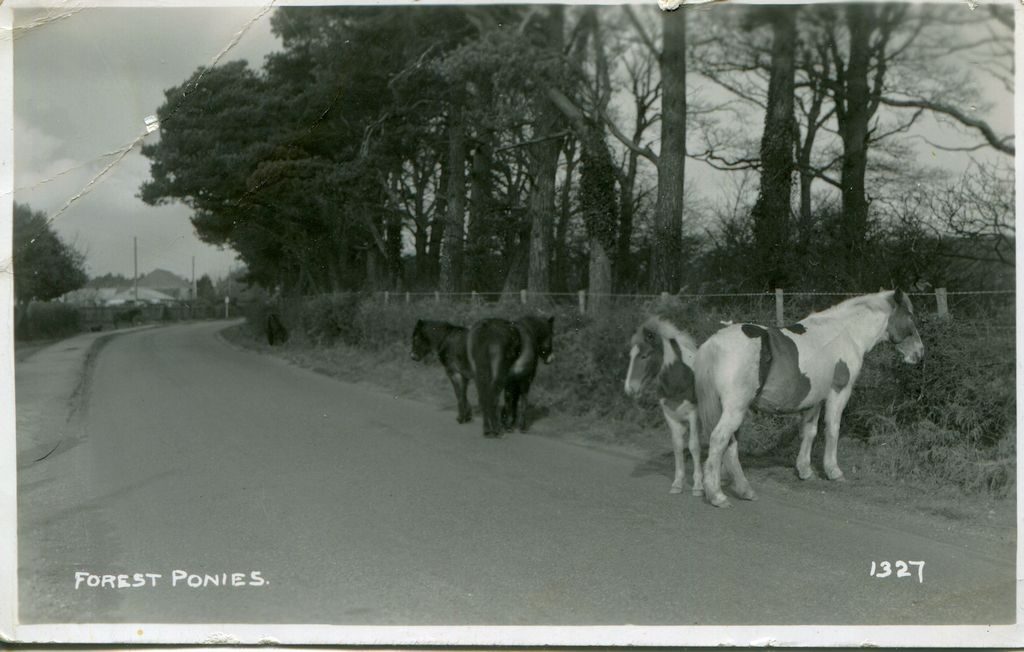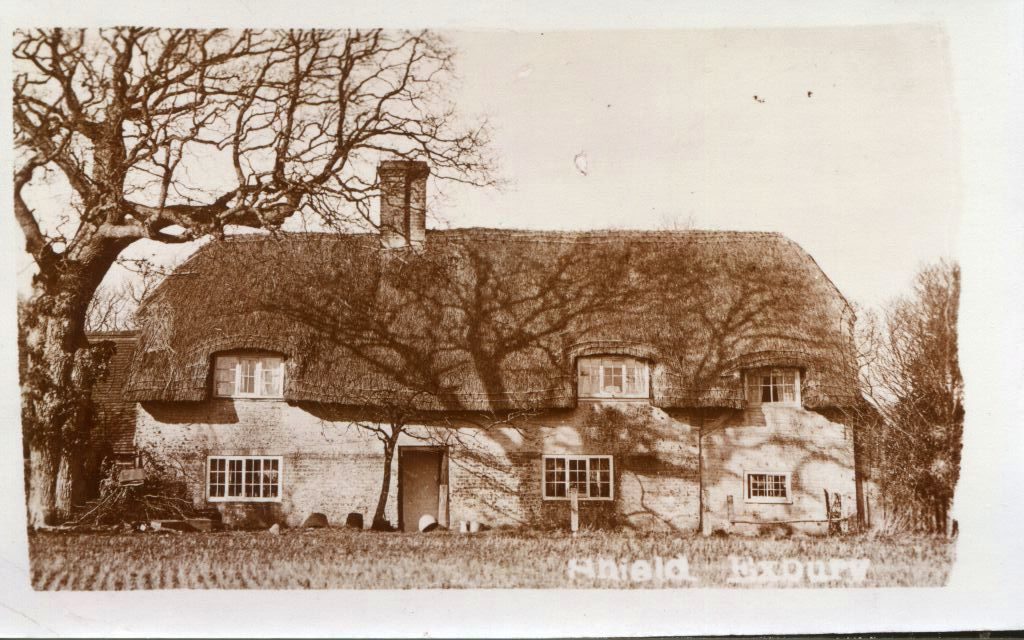Images: Mary Gray, copyright reserved. For any rights requests, please contact the New Forest Heritage Centre in the first instance.
Mary Gray, Trans 2, CH2 Duration 5:54
CB: Thirty-one. (MG031)
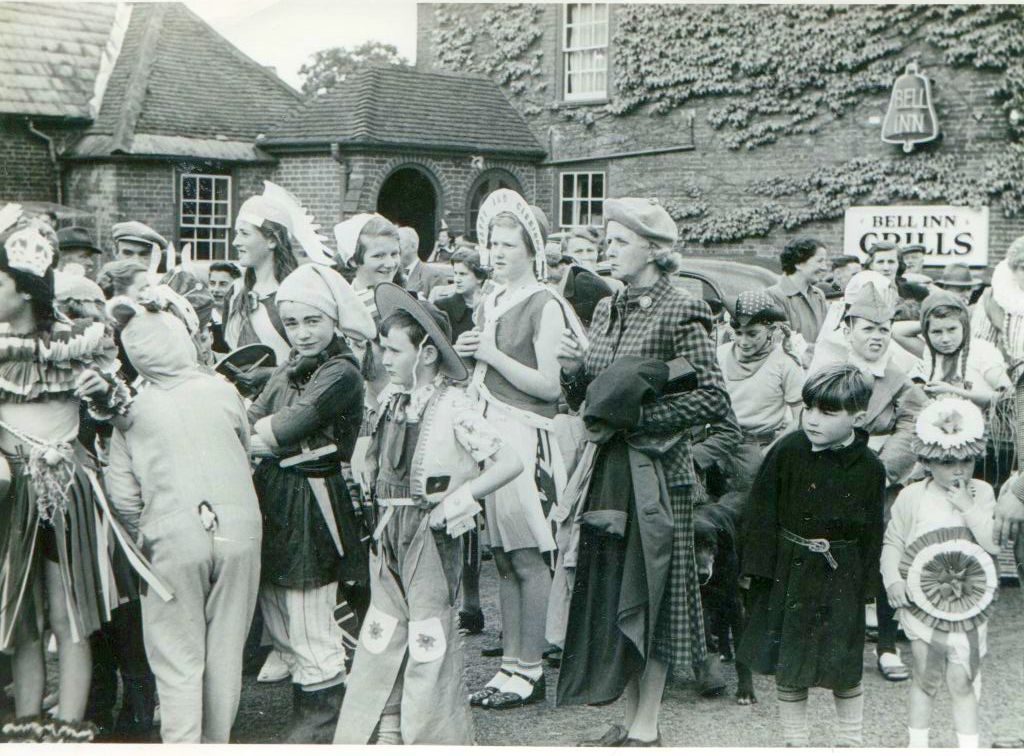
Mary: Ah, well, this is celebrating the Queen’s coronation. Bramshaw had a big event at the Fountain Court at Bramshaw and we went from The Bell at Brook and we walked up through the village. There’s my sister [information redacted] in the middle, smiling, with a little Dutch cap on.
CB: I see.
Mary: [information redacted] to the right; her father worked on a farm in the village –
CB: Okay, that’s the one with a sort of a head-
Mary: I can’t remember what that was –
CB: Next to the lady with a beret on –
Mary: Yes, and that’s Miss Quigley – and her son in front of her, I believe he might be a cowboy, [information redacted].
CB: And who was she, Miss Quigley?
Mary: Just a local person; she lived next to The Green Dragon in the old police house down at (..?..) Well, a policeman lived there before then and then she was the next one to move in.
CB: Okay.
Mary: [information redacted] to the right, she lived just down the road at Canterbrook Cottage; she was a little peasant girl –
CB: With her hair in plaits –
Mary: With her hair in plaits –
CB: Sort of far right of the photograph, I see.
Mary: [information redacted], he lived in the village, his father worked on the Warrens’ estate, tractor driver; that’s [information redacted].
CB: He’s got that – is that a Robin Hood type outfit?
Mary: I should think he must have been, it looks it, yeah, there’s a collar to it as well.
CB: Yeah.
Mary: I can’t remember the other little ones. I remember some of the ladies at the back.
CB: Mm. Okay. Right, so, number thirty-two (MG032) Ah, there’s mum –
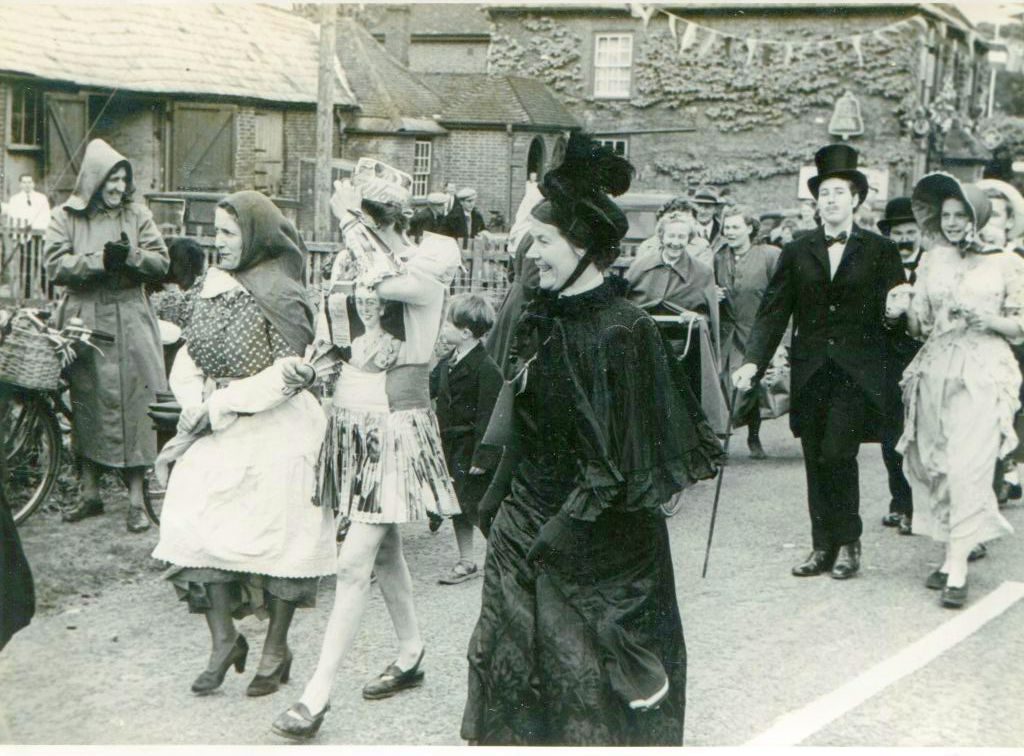
Mary: There’s my mother, Annie Rockley, to the fore, she was a Victorian Lady –
CB: All in black.
Mary: It really suited her – all in black –
CB: Beautiful –
Mary: Yes. And, um, Ivy Ellcock nee Hatch. She was an old village person; Florrie Ellis; um, Mrs. Batten –
CB: With her bike –
Mary: Her daughter still lives in the village. Rosemary Gee, sadly passed away very young, with Mavis Fielder –
CB: Okay –
Mary: A village family again. Yes, they’re all very local people then, you really did know them all.
CB: That’s nice, a really nice community –
Mary: Mm. Absolutely.
CB: Thirty-three. (MG033)
Mary: Ah yes, here we are. Back to farm life again. This is the boys: George Gray, my son, the younger one, on the left. At the steering wheel is Richard Dibden, my nephew – he was always here, playing with our boys – and that is Kevin sat on – and Kevin still has that little tractor now.
CB: Does he?
Mary: His pride and joy; yeah. yep.
CB: Ah. Okay, and number thirty-four. (MG034)
Mary: Oh yes, this is quite interesting. This is one of the [information redacted] boys, from the Royal Oak at Fritham.
CB: Okay.
Mary: They used to – George on the left and [information redacted] on the right – they used to go to pre-school together and used to come back and play; and Oakie, our very loyal dog, always looked after the children when they were out in the Forest playing.
CB: Yeah. Lovely.
Mary: Yes.
CB: Number thirty-five. (MG035) Ah, you with the pigs.
Mary: Oh, yes, this is [information redacted] and other friends of ours: George in the middle and Kevin pointing out – I don’t know quite what he was telling them all about the pigs. (Both chuckle)
CB: Ah, number thirty-six (MG036)
Mary: Again this is [information redacted] on the left on the pony; her brother [information redacted] on the reins; and George on the left to the front; and Kevin giving Jock, the pony, a little cuddle by the look of it.
CB: What was [information redacted] surname?
Mary: [information redacted]
CB:
[information redacted].
Mary: Actually her father and Bob my husband, they were together in the army, that’s how we all met –
CB: Oh, I see –
Mary: Both married and the families still kept in touch, even now.
CB: Number thirty-seven (MG037)
Mary: Oh, here’s George with [information redacted] ; George was never quite the pony man, after being thrown off about – when he was about three years old – looks a bit worried there –
CB: He does! Thirty-eight (MG038) This is a good one-
Mary: This is Kevin our eldest son. He’s sharpening the scythe that they used to have to use to cut the grass but Kevin, even now, he likes to use it sometimes.
CB: Does he –
Mary: And that was my father’s old scythe so, you know, yeah, yeah. He’s got old-fashioned traits about him.
CB: Thirty-nine. (MG039)
Mary: Oh, yes, this is Jack Young to the fore with his tractor and trailer. [information redacted] he used to help him, obviously getting a load of hay in at Brook.
CB: Oh won’t be long…
Mary: For winter feed.
CB: …til it’s summer again. Number forty. (MG040) Oh –
Mary: Now this is …. I think – I’m pretty sure this is Kevin having a go at loading because he was never too sure but, if left alone, he used to get on with it and he used to have a loader then and put so many bales; you don’t see them used now, I don’t think. It’s not that long ago but it helped sort of not to heave them up individually by hand. (Laughs)
CB: Yes. Forty-one (MG041)
Mary: Cheeky chappy [information redacted] on his Massey Ferguson, always helping out with the haymaking.
CB: (Laughs) … And that’s it!


